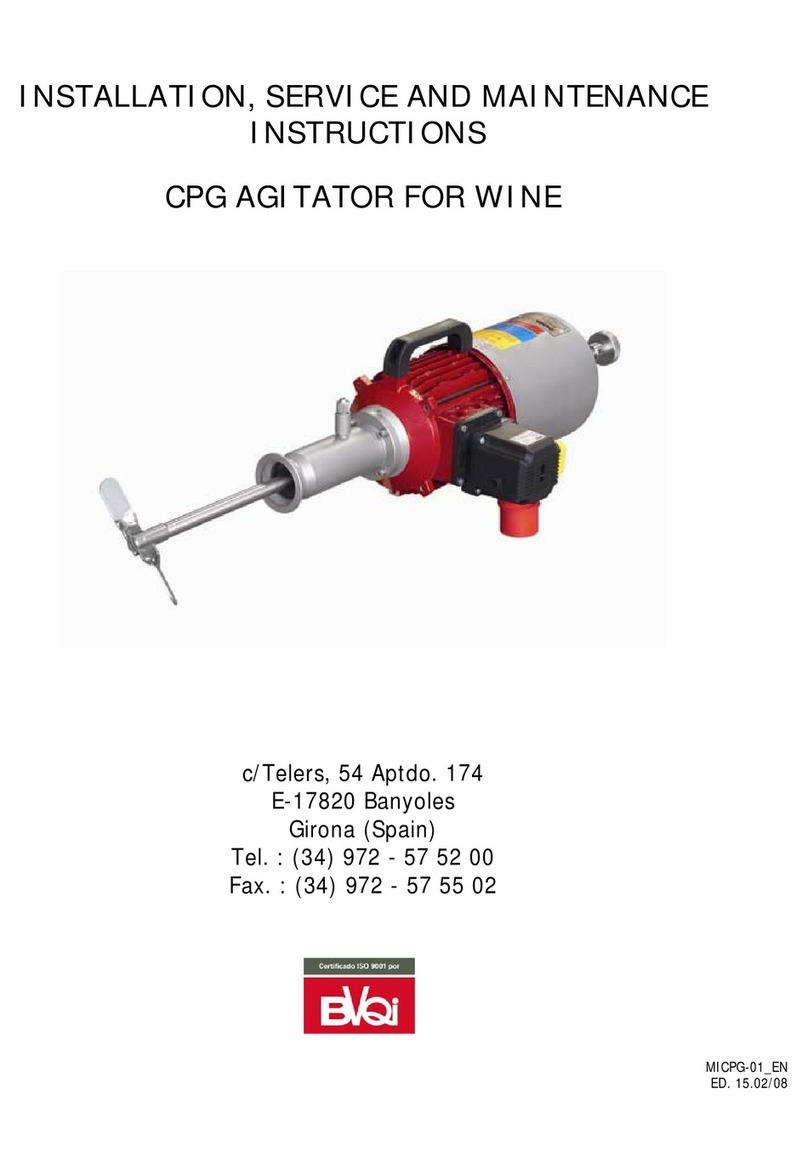INOXPA MCR Ex Manual

INSTALLATION, SERVICE AND MAINTENANCE INSTRUCTIONS
ANNEX FOR CE ATEX MARKED EQUIPMENT ACCORDING TO DIRECTIVE
2014/34/EU:
COUNTER-ROTATING AGITATOR
MCR Ex
Original Manual
20.072.30.03EN
(A) 2022/11
20.072.32.0001

(1) where X is a numeric character
EU Declaration of Conformity
We:
INOXPA, S.A.U.
Telers, 60
17820 - Banyoles (Girona)
Hereby declare under Our sole responsibility that the machine
COUNTER-ROTATING AGITATOR
Model
MCR
Type
MCR-1, MCR-2, MCR-3, MCR-4, MCR-5, MCR-6, MCR-7, MCR-8
From serial number IXXXXXXXXX to IXXXXXXXXX (1)
is in compliance with all applicable provisions of the following directive:
Directive ATEX 2014/34/UE
Harmonized technicals norms applicable:
EN ISO 80079-36:2016
EN ISO 80079-37:2016
EN 1127-1:2019
EN 13237:2012
EN 15198:2007
EN IEC 60079-0:2018
This Declaration of Conformity covers equipment with the following ATEX
marking:
II 2G Ex h IIB T4…T3 Gb
II 2D Ex h IIIB T125 ºC…T200 oC Db
II 2G Ex h IIB T4…T3 Gb
II 2D Ex h IIIB T125 ºC…T200 oC Db
20.072.30.04EN
(A) 2022/10

(1) where X is a numeric character
The technical documentation referenced 13719678-775657 is on file with the
notified body LABORATOIRE CENTRAL DES INDUSTRIES ELECTRIQUES
(LCIE), 33, Av. du Général Leclerc BP 8, 92266 Fontenay-aux-Roses, France.
Reference num. 0081.
The person authorized to compile the technical documentation is the signer of
this document.
Banyoles, 2022
David Reyero Brunet
Technical Office Manager

INOXPA S.A.U. 20.072.30.03EN · (A) 2022/11 2
1. Table of Contents
1. Table of Contents
2. Generalities
2.1.Instructions manual.......................................................................................................................................3
2.2.Compliance with the instructions ..................................................................................................................3
2.3.Warranty........................................................................................................................................................3
3. Safety
3.1.Warning symbols...........................................................................................................................................4
3.2.General safety instructions ...........................................................................................................................4
4. General Information
4.1.Description....................................................................................................................................................6
4.2.Principle of operation ....................................................................................................................................6
4.3.Application.....................................................................................................................................................6
5. Installation
5.1.Reception of the agitator...............................................................................................................................7
5.2.Identification of the agitator...........................................................................................................................8
5.3.Transport and storage...................................................................................................................................8
5.4.Location.........................................................................................................................................................8
5.5.Electrical installation .....................................................................................................................................9
5.6.Assembly.....................................................................................................................................................10
6. Start-up
7. Troubleshooting
8. Maintenance
8.1.General considerations...............................................................................................................................14
8.2.Maintenance................................................................................................................................................14
8.3.Lubrication...................................................................................................................................................14
8.4.Spare parts..................................................................................................................................................14
8.5.Conservation...............................................................................................................................................15
8.6.Cleaning......................................................................................................................................................15
8.7.Disassembly and assembly of the agitator .................................................................................................15
9. Technical Specifications
9.1.Materials......................................................................................................................................................17
9.2.Other features.............................................................................................................................................17
9.3.Dimensions .................................................................................................................................................17
9.4.Exploded drawing and parts list..................................................................................................................17

Generalities
INOXPA S.A.U. 20.072.30.03EN · (A) 2022/11 3
2. Generalities
2.1. INSTRUCTIONS MANUAL
This manual contains information about the reception, installation, operation, assembly, disassembly and
maintenance of counter-rotating agitator.
Carefully read the instruction prior to starting the agitator, familiarize yourself with the installation, operation and
correct use of the agitator and strictly follow the instructions. These instructions should be kept in a safe location
near the installation area.
The information published in the instruction manual is based on updated data.
INOXPA reserves the right to modify this instruction manual without prior notice.
2.2. COMPLIANCE WITH THE INSTRUCTIONS
Not following the instructions may impose a risk for the operators, the environment and the machine, and may
result in the loss of the right to claim damages.
This non-compliance may result in the following risks:
•Failure of important machine/plant functions.
•Failure of specific maintenance and repair procedures.
•Possible electrical, mechanical and chemical hazards.
•Risk to the environment due to the type of substances released.
2.3. WARRANTY
Any warranty will be void immediately and lawfully and, additionally, INOXPA will be compensated for any civil
liability claims submitted by third parties, in the following cases:
•The service and maintenance work have not been carried out in accordance with the service instructions,
the repairs have not been carried out by our personnel or have been carried out without our written
authorisation.
•Modifications have been carried out on our material or equipment without written authorisation.
•The parts or lubricants used are not original INOXPA parts and products.
•The material or equipment has been improperly used, has been used negligently, or has not been used
according to the instructions and their intended.
The General Conditions of Delivery already in your possession are also applicable.
The machine may not undergo any modification without prior approval from the manufacturer. For
your safety, only use original spare parts and accessories.
The usage of other parts will relieve the manufacturer of any liability.
Changing the service conditions can only be carried out with prior written authorization from INOXPA.
The agitator was selected for use in explosive atmospheres at the time of placing the order, according to
ATEX form. INOXPA is not liable for any damage that may arise if the information provided by the buyer
is incomplete or incorrect (liquid type, viscosity, RPM, classification of the potentially explosive area, gas
generated by the potentially explosive atmosphere, etc).
Please do not hesitate to contact us in case of doubts or if further explanations are required regarding
specific data (adjustments, assembly, disassembly, etc.).
This manual suits for next models
8
Table of contents
Other INOXPA Industrial Equipment manuals
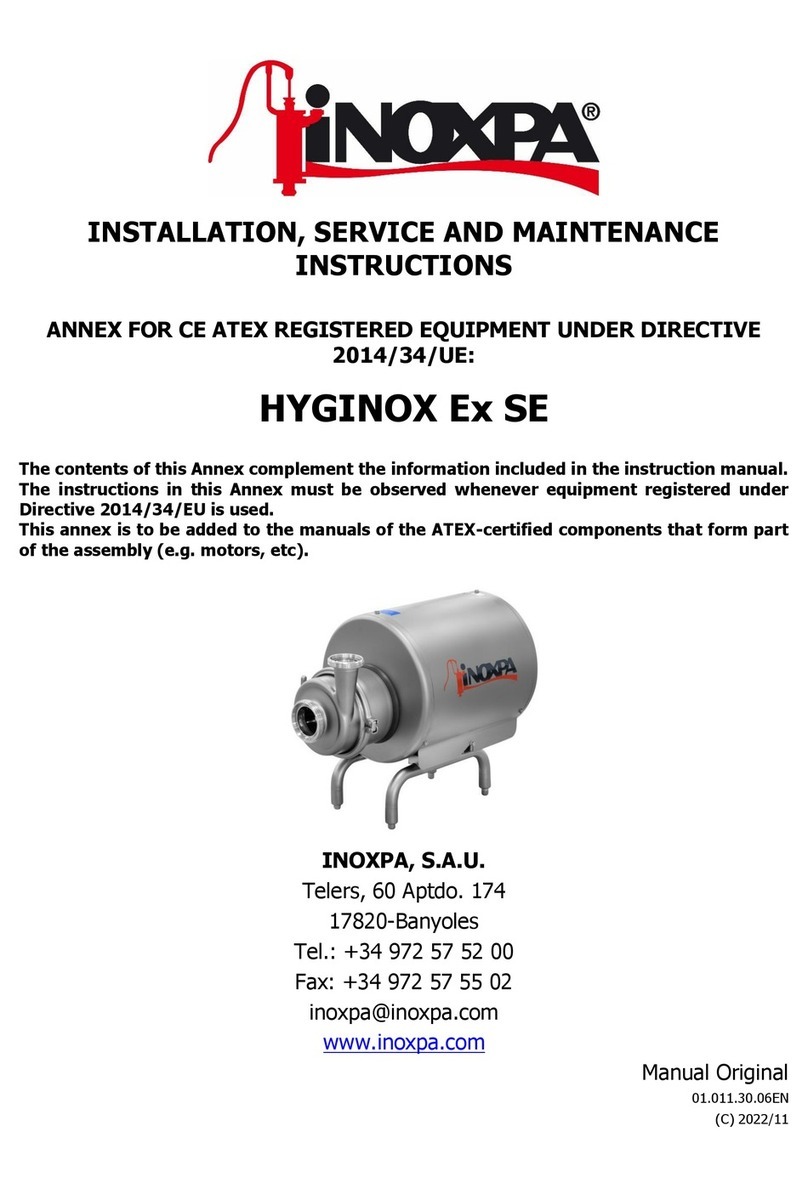
INOXPA
INOXPA HYGINOX Ex SE Manual

INOXPA
INOXPA BFI Manual
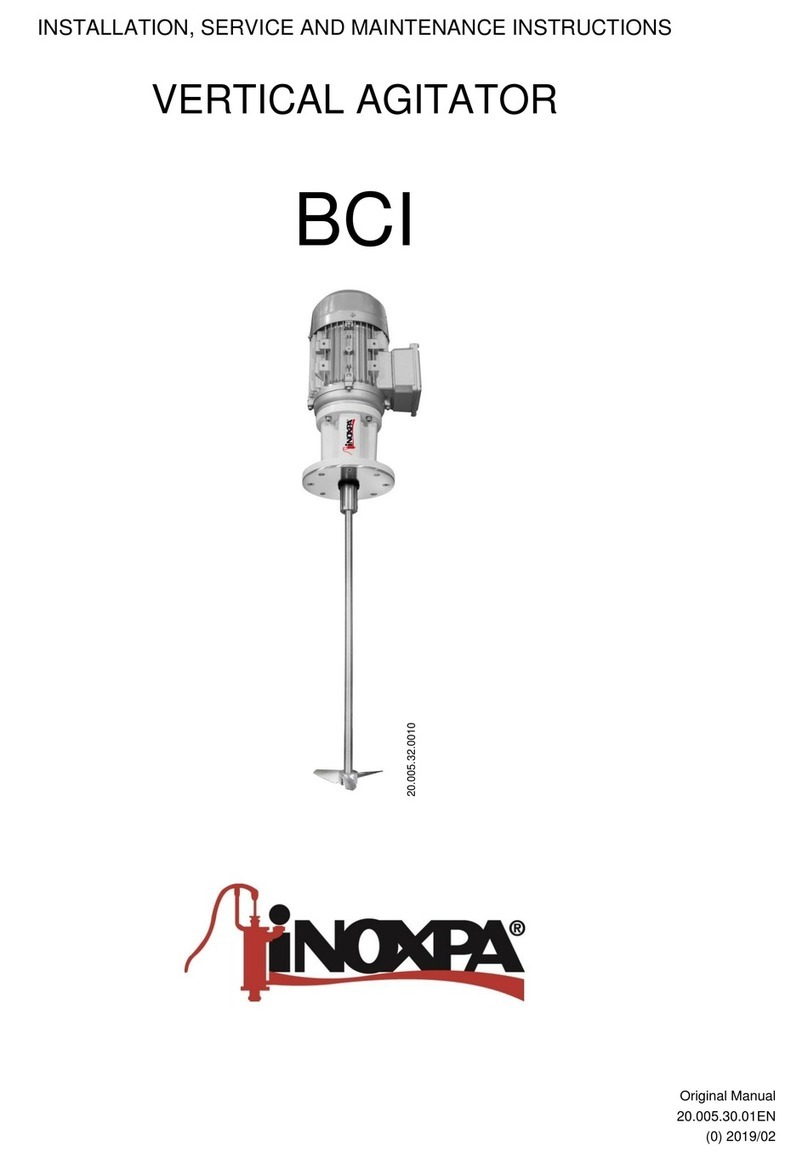
INOXPA
INOXPA BCI Series Manual
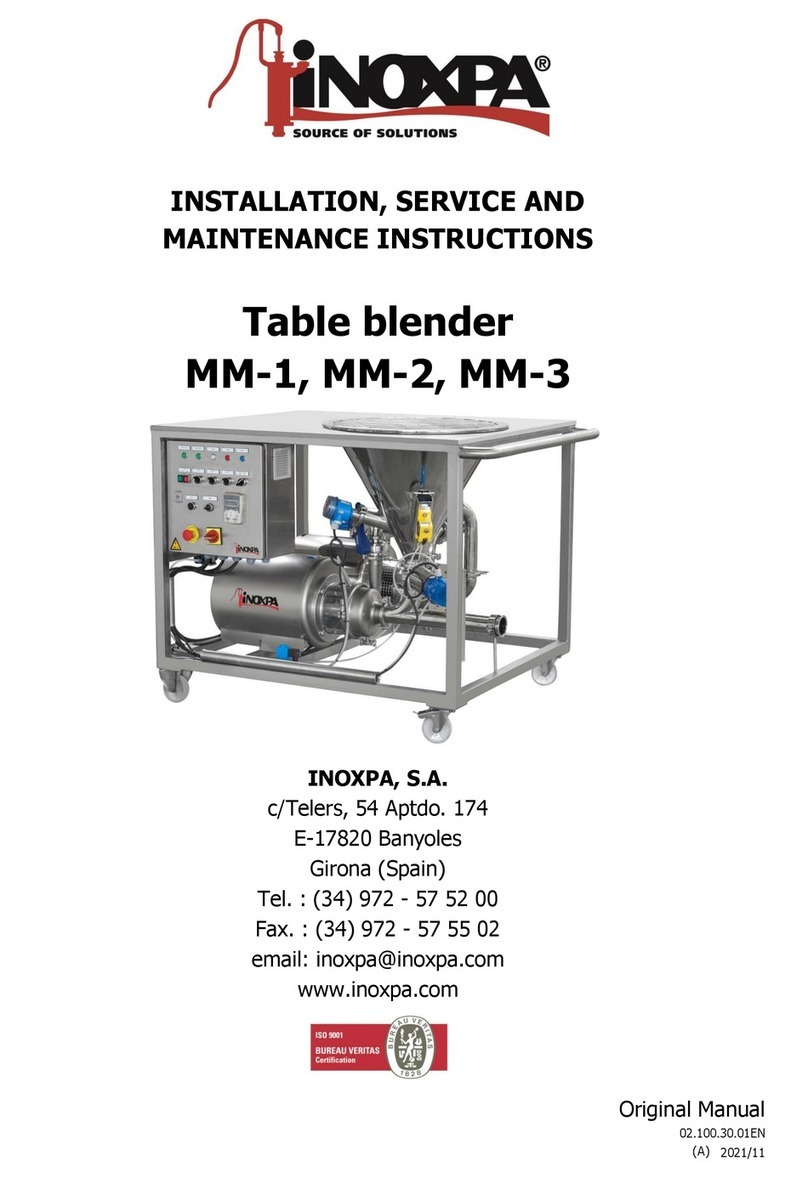
INOXPA
INOXPA MM-1 Manual
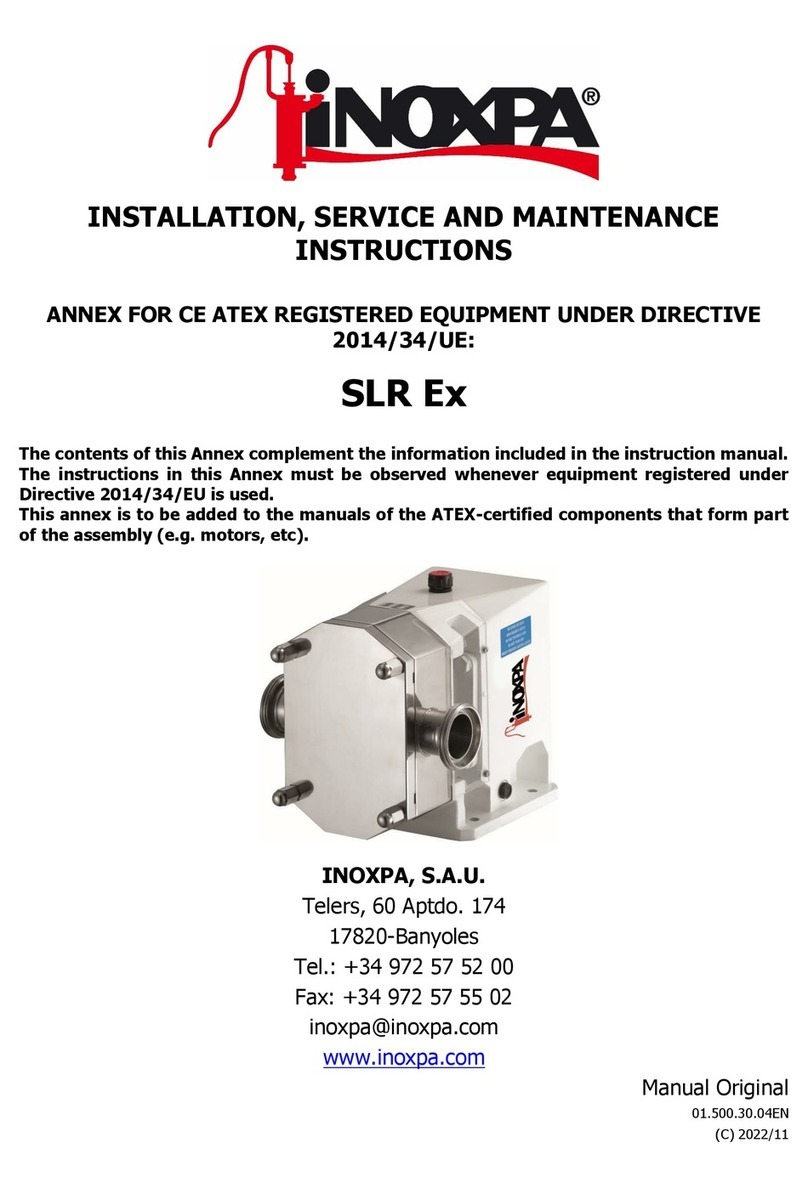
INOXPA
INOXPA SLR Ex Manual

INOXPA
INOXPA KIBER KSF Ex Manual
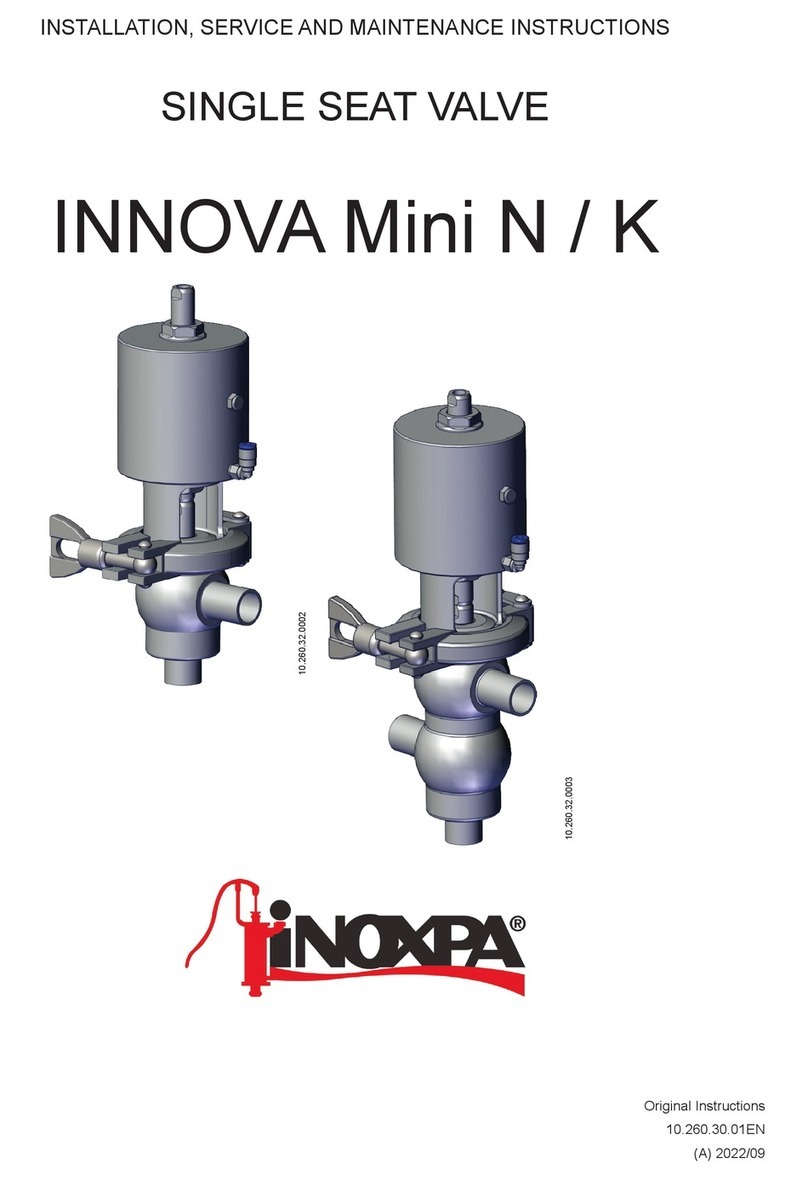
INOXPA
INOXPA INNOVA Mini N Manual
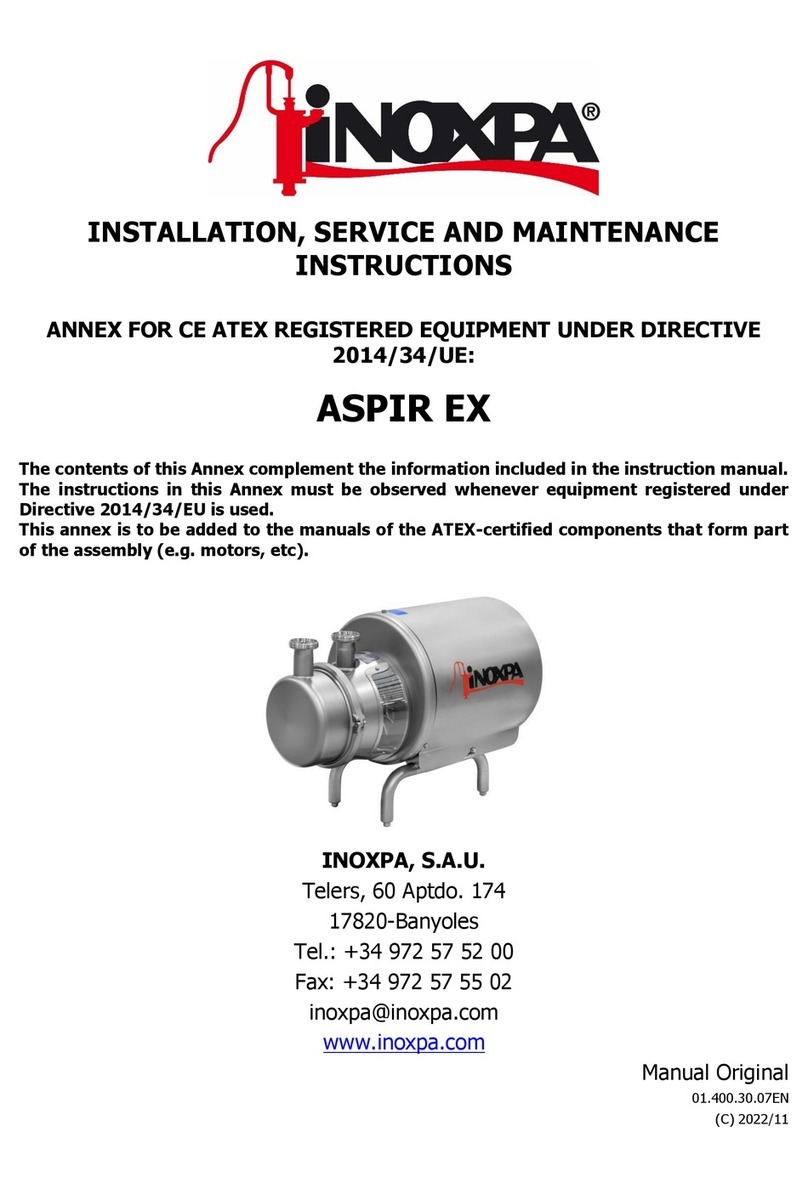
INOXPA
INOXPA ASPIR EX Manual

INOXPA
INOXPA KIBER KS Ex Manual
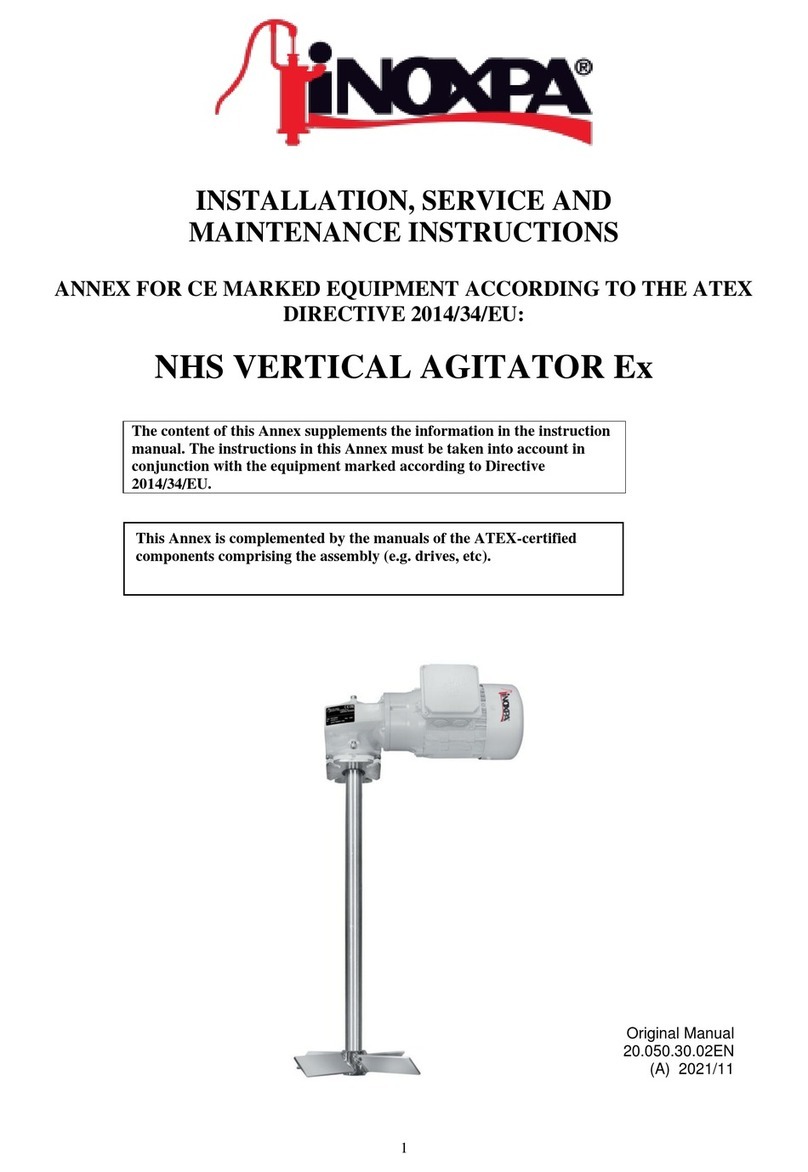
INOXPA
INOXPA NHS VERTICAL AGITATOR Ex Manual
